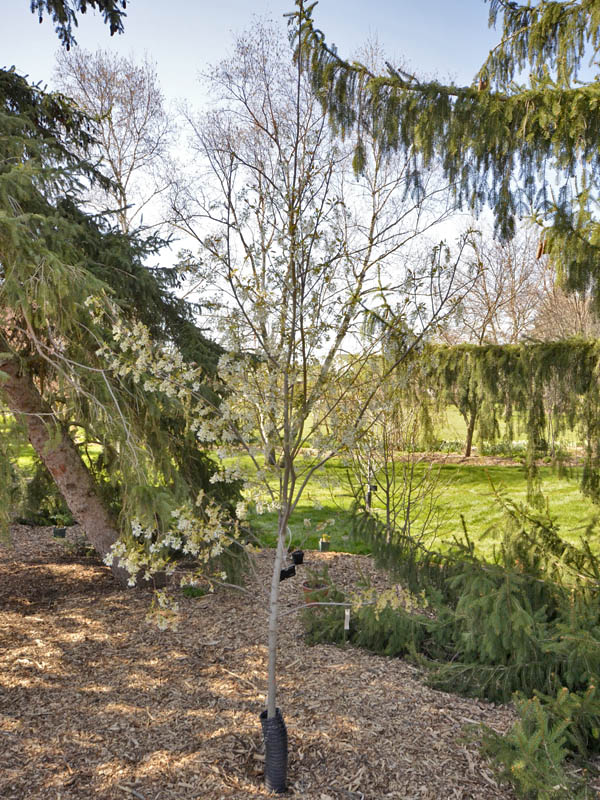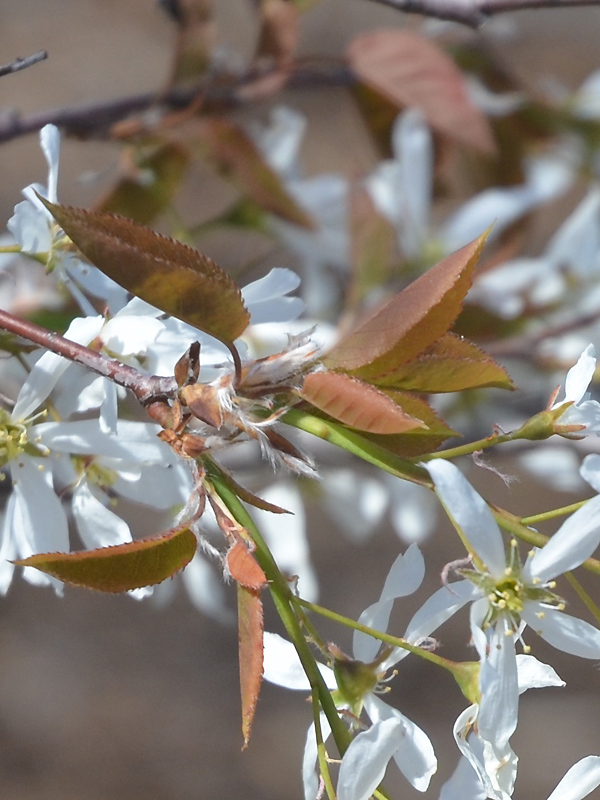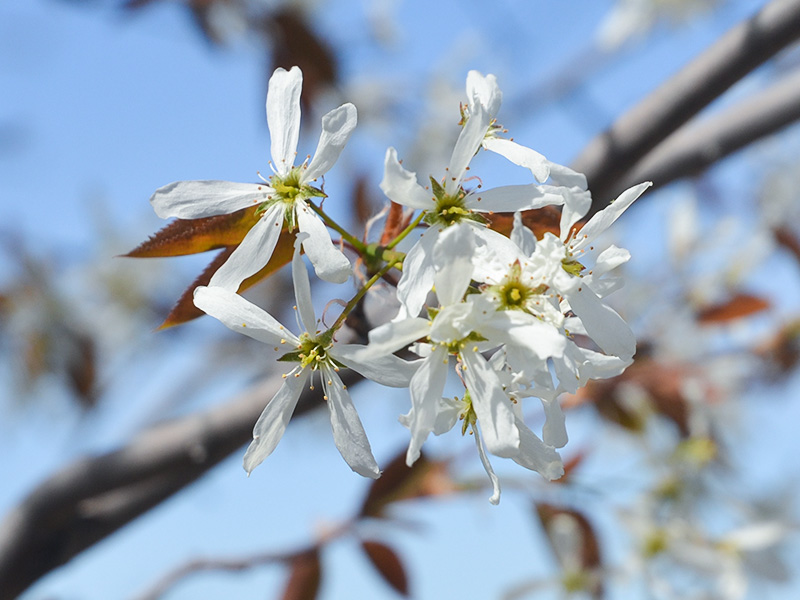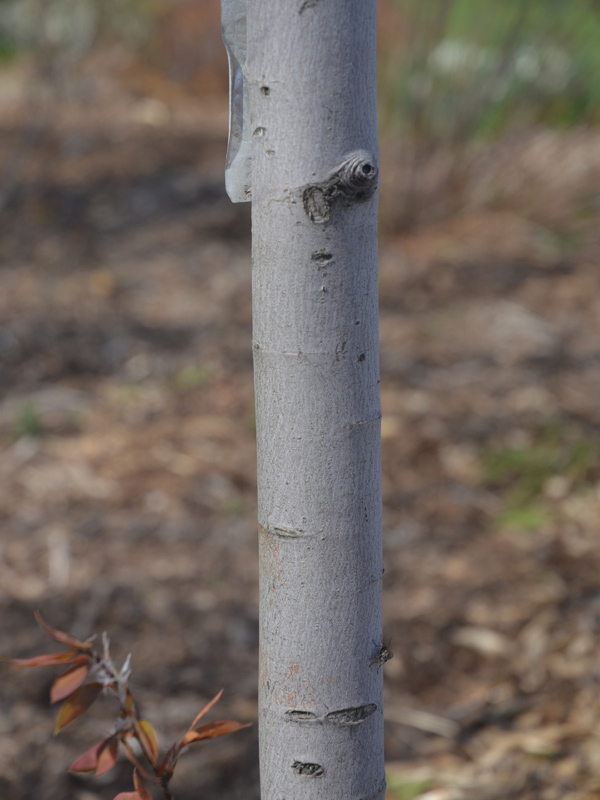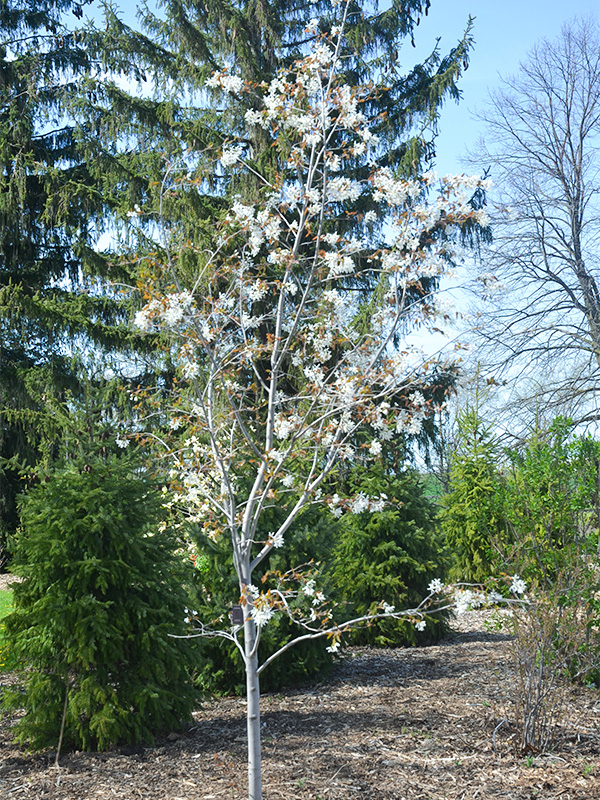
Woody > Amelanchier > Amelanchier laevis > Amelanchier laevis
Amelanchier laevis
Allegheny Serviceberry, Smooth Shadbush, Juneberry
Origin: Native to several regions in North America, which includes Newfoundland, Georgia, Alabama, Michigan, and Kansas.
| Family |
| Rosaceae |
| Genus |
| Amelanchier |
| Species |
| laevis |
| Category |
| Woody |
| Type |
| Tree (deciduous) |
| Pronunciation |
| USDA Hardiness Zone |
| 4 - 8 |
| Canadian Hardiness Zone |
| 2 - 5a |
| RHS Hardiness Zone |
| H7 |
| Temperature (°C) |
| -35 - (-29) |
| Temperature (°F) |
| -30 - (-20) |
| Height |
| 4 - 12 m |
| Spread |
| 4 - 12 m |
Photographs
Description and Growing Information
Flowering Period
| General Description |
| Genus name comes from a French provincial name for Amelanchier ovalis a European plant in this genus. |
| Landscape |
| Border planting, informal hedges or screens. |
| Cultivation |
| Full sun and partial-shade. Well-drained, average to medium and moist loam soils. |
| Shape |
| Shrub or tree. |
| Pests |
| Rust, leaf spot, fire blight, powdery mildew and canker are occasional disease problems. |
| Habitat |
| Thickets, open woods, sheltered slopes and wood margins |
| Leaf Description |
| Leaves are finely-toothed and obovate. 6 cm in size. |
| Flower Description |
| Showy, 5-petaled, slightly fragrant and dropping cluster of flowers. Appears in early spring before the leaves. |
| Fruit Description |
| Fruit is up to 18 mm in diameter, purple to nearly black. Small, round and edible berries. Resembling blueberries in size, taste and colour. The bark is greyish-silver with light vertical stripes. |
| Colour Description |
| The berries are dark purplish-black when ripen. The leaves are purplish-bronze in spring, mature to a darker green in summer and orangish-red in autumn. |
| Texture Description |
| The bark is smooth. |
| Notable Specimens |
| The A.M. Cuddy Gardens, Strathroy, Ontario, Canada. |
| Propagation |
| Propagate through layering. May also use seeds, but unless the plant is isolated the result is unlikely to come true. It is also important to note that spring-sown seeds may take up to two years to germinate. |
| Ethnobotanical Uses (Disclaimer) |
| Berries are edible and used in jams, jellies and pies. |
